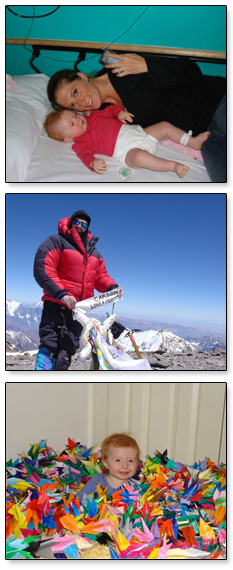Carson's Story

In February of 2007, we took our 5-month old daughter, Carson, to Johns Hopkins Hospital because she was having what appeared to be seizures. (http://www.youtube.com/user/CarsonHarrisFDN?feature=mhsn) Twelve hours, a spinal tap and an EEG scan of her brain later we were told that she has a rare form of Epilepsy called "Infantile Spasms". There are no words to describe the emotions we experienced upon hearing the news that our daughter had about a 20% chance of recovering. Fortunately for us, Johns Hopkins has one of the best pediatric epilepsy programs in the country so we were immediately seen by specialists who have hands on experience with this rare disorder. We were offered multiple forms of treatment, including a regiment of steroids called ACTH, Vigabatrin, Topamax and a more radical approach that Hopkins happens to specialize in called the ketogenic diet.
The Ketogenic Diet
Normally, our bodies run on energy from glucose, which we get from food. We can't store large amounts of glucose, however. We only have about a 24-hour supply. When a child has no food for 24 hours -- which is the way the diet begins, usually in a hospital -- he or she uses up all the stored glucose. With no more glucose to provide energy, the child's body begins to burn stored fat. The ketogenic diet keeps this process going. It forces the child's body to burn fat round the clock by keeping calories low and making fat products the primary food that the child is getting. In fact, the diet gets most (90 percent) of its calories from fat. The rest comes from carbohydrates (2%) and protein (8%). The amounts of food and liquid at each meal have to be carefully worked out and weighed for each person. Doctors don't know precisely why a diet that mimics starvation by burning fat for energy should prevent seizures, although this is being studied. Nor do they know why the same diet works for some children and not for others. (Source: The Epilepsy Foundation Website)
Since Carson's Mom, Gerry, was perceptive enough to have caught the subtle changes in her behavior in the first week, the doctors told us that we not only had the option of trying the diet before the drugs, but that it also had a better chance of working. If her condition had gone untreated for a few more weeks (as many do) we would have had to move straight into the medication but then we would have also had to simply deal with the lasting side effects that the drugs can cause. Carson was admitted to the hospital on a Saturday, she began fasting on Sunday and had her last seizure on Tuesday night. Carson came home from the hospital on Thursday of that same week and continued the diet for 8 months. After her 1st month on the diet, the EEG scan of her brain had almost completely normalized other than some slowing in the left temporal lobe. After her 2nd month on the diet, her EEG was perfectly clear. We are overjoyed to report that Carson is now developing normally and continues to be seizure free.
Thank You
The response from our friends, family and community after Carson's diagnosis and during her treatment was nothing short of incredible. Our friend Joel planted a prayer flag at the top of South America's tallest peak, while Jason and his crew in Japan folded 1000 paper cranes in the hopes that our wish for Carson to get better would come true. (http://en.wikipedia.org/wiki/Thousand_origami_cranes) Others provided emotional support, helped us to fundraise for the Pediatric Epilepsy Center at Johns Hopkins Hospital or simply kept us in their daily thoughts and prayers. From the bottom of our hearts, we can not begin to thank you for your support both then and now!












